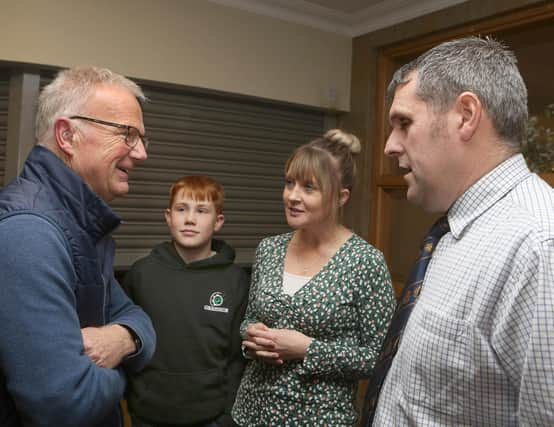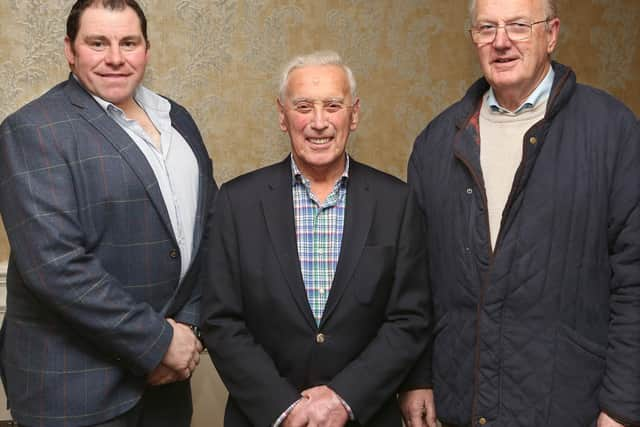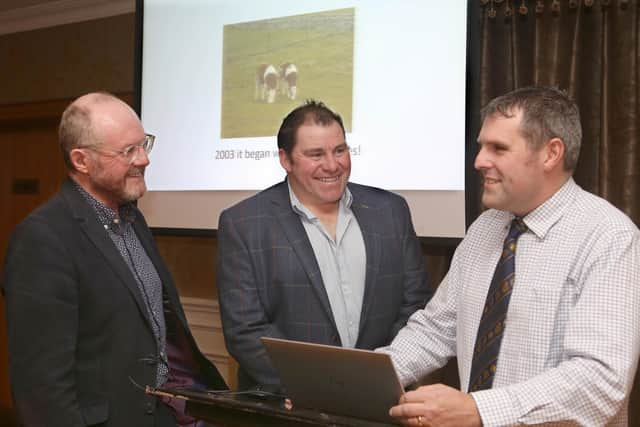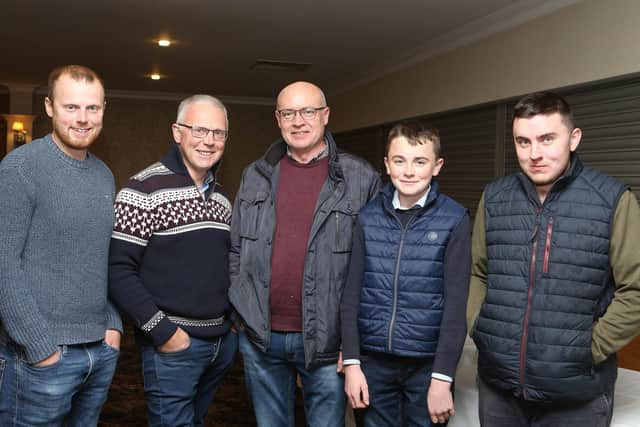Orkney suckler farmer tells his story of developing a farm from scratch


The speaker was Steven Sandison, who has an extensive farming operation with a suckler cow herd and ewe flock on one of the Orkney Islands.
As a Nuffield Scholar, Steven has travelled widely, looking at fertility and efficient breeding in beef herds.
Advertisement
Advertisement
Enjoying a few days in Fermanagh with his wife, Lorraine, and son, Glen, where he visited a number of farms, Steven gave an account at the meeting in the Killyhevlin Hotel, Enniskillen of starting off in farming with just three acres of land in 2003.


Over the past 20 years, he has built up a farm business covering 330 acres with 90 Simmental and Salers cross cows and a flock of 150 ewes.
Steven and Lorraine also have two daughters, Carmen and Callie.
His farming operation, based in Harray in the west mainland of Orkney, was Orkney’s first Monitor Farm from 2012 to 2015.
Advertisement
Advertisement
The Sandisons farm on the west side of the main island, where they established a home on three acres in 1999.


Steven left full-time employment and rented farmland to establish a suckler herd, and in the years following, purchased 113 acres of land.
The family qualified for Crofters’ Grants and continued to develop the infrastructure on the farm including more farm buildings as well as purchasing more portions of land over the years.
The biggest purchase was in 2020, with 158 acres bought, and a year ago, they sold off 86 acres a further distance away to purchase 100 acres adjacent to them, bringing the farm total acreage of 330.
Advertisement
Advertisement
The suckler calves are sold at weaning in February/March, while lambing begins in April.


He told farmers there were many challenges to farming from scratch as they had done, and that got him thinking about a realistic number of calves weaned from 100 cows.
Steven applied for and was successfully accepted for a Nuffield Scholarship in 2016/2017 to examine this issue of the realistic number of weaned calves from 100 suckler cows. He looked at this issue across five countries and visited farmers on similar holdings to their own.
Steven had a list of questions on scanning, calving and weaning as well as replacement rates and calving spread. He had two main questions: “Is weaning 92 per cent in nine weeks realistic?” and, “What do the best herds have in common?”
Advertisement
Advertisement
Across the UK and Ireland, he looked at the top seven farms where scanning rates were 95 per cent, with a calving percentage of 95, weaning at 93 per cent, and calving spread of 9.5 weeks.
By contrast, the bottom seven farms had a scanning rate of 91.5 per cent, calving of 86 per cent, weaning of 84 per cent and a calving spread of 28 weeks – taking three times longer to calve the cows than the top farmers.
However, he said there were many variables and permutations, such as breed of cows.
By calving cows at two years old, 62 per cent of farmers indicated they were making profit, but when calving down at three years old, just 36 per cent were making a profit.
Regarding changes he has made at the home farm, Steven feeds cows extra protein pre-calving and had moved to benchmarking. His aim is to reduce the overall cow weights to under 700kgs.